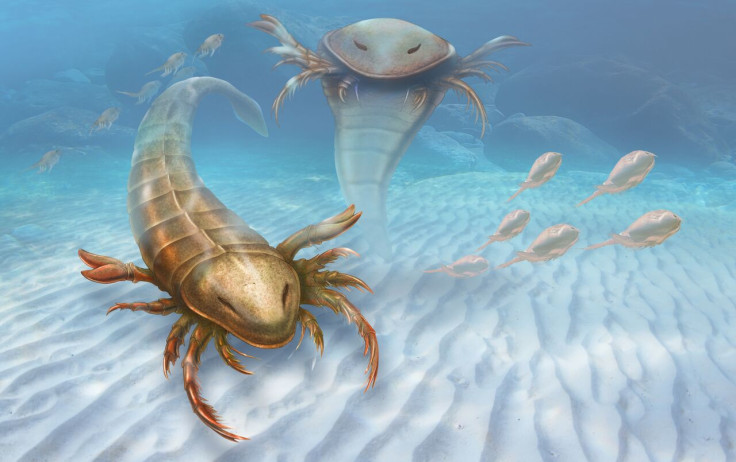Fossilised 'giant sea scorpion' discovered in Iowa

The fossilised remains of a giant 'sea scorpion' measuring up to 1.7m in length has been found in the river of land-locked state Iowa, USA. Researchers have found more than 150 fossil fragments in the upper layer of the Winneshiek Shale – a sandy shale, 27 metres in thickness, which was caused by a meteorite impact and most of which is submerged beneath the Iowa River.
The researchers from Yale University said that the ancient eurypterid dates back some 460 million years, making it the oldest known of its kind and 10 million years older than the previous one. It has been dubbed the Pentecopterus decorahensis after the ancient Greek warship Penteconter.


Lead author James Lamsdell from Yale University, said: "The new species is incredibly bizarre. The shape of the paddle - the leg which it would use to swim - is unique, as is the shape of the head. It's also big - over a meter and a half long!"
"Perhaps most surprising is the fantastic way it is preserved – the exoskeleton is compressed on the rock but can be peeled off and studied under a microscope. This shows an amazing amount of detail, such as the patterns of small hairs on the legs. At times it seems like you are studying the shed skin of a modern animal – an incredibly exciting opportunity for any palaeontologist."
By analysing some of the better preserved fossils, the researchers were able to determine that its hindmost legs included paddles which were most likely used for swimming and digging. They would have also been covered in setae – bristles – which may been there for sensory purposes.
The front two sets of legs, the report published in BMC Evolutionary Biology says, were angled forwards which suggests they would have been used for catching prey.
© Copyright IBTimes 2025. All rights reserved.






















